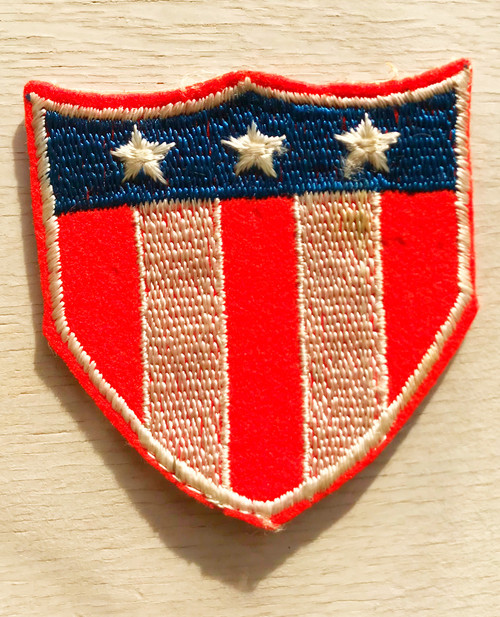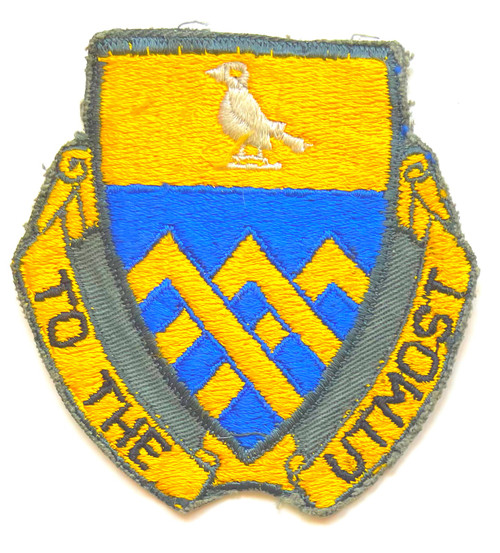3.1 by 3.2 inches
provenance Morton Cohen
It was US Army policy in W W2 to rehabilitate wounded soldiers with combat experience and send them back into combat, after they had been hospitalized with wounds. This seems
rather unfair, that seriously wounded soldiers would be sent repeatedly back into the fight, rather than allowing others from the Army's vast manpower pool to have a shot at it.
Some soldiers who had special aptitude for athletic endeavors, but who were not slated for combat duty themselves, were placed as instructors in the Army Physical Training Unit in
England. This unit was solely concerned with giving exercise and physical therapy to combat-wounded GIs, to prepare them for a return to full combat duties. ASMIC magazine ran a
photo of a soldier wearing the insignia of the Army Physical Training Unit back in the late 1980's, but almost no accompanying information was given with the photo.
About 15 years ago, I knew a veteran of the Ist Bn, 501st PI, named Harold Allen. Like many paratroopers, Harold was a physical fitness nut and health fiend and a sports competitor.
He went through training at Toccoa, GA, Ft Benning,GA, and Camp Mackall, NC, with the 501st, but on a night practice jump shortly before D-day, Harold broke a leg upon landing. The
nature of his injury put Harold out of the Paratroops for good. After his leg had healed, Harold was assigned to take classes and join the Army Physical Training Unit at a town
"somewhere north of London". Harold took notes in his classes and I now own his notebook, which indicates that he received lessons in human anatomy, first aid, and how to instruct
others in unarmed combat and boxing. The first page of Harold's notebook contains a hand-drawn picture of the APT pocket patch, with an explanation of what the various design
symbols represent:
No
ALERTNES
ENDOTAKE
STRENGTH,












